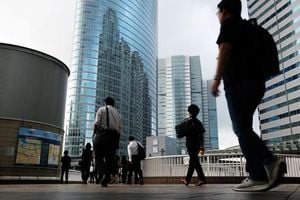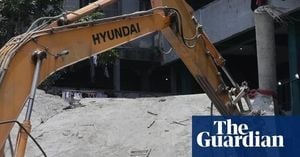Deep in the heart of South America, the Amazon rainforest—often called the lungs of the planet—faces both renewed hope and persistent peril. Recent developments in Brazil and Peru highlight the complex interplay between local innovation and regional enforcement in the ongoing struggle to protect this vital ecosystem. As the state of Pará in Brazil prepares to host the upcoming UN COP30 climate summit, two stories from opposite sides of the Amazon illustrate both the promise and the challenges of environmental stewardship.
In Mamuí, a rural community in southern Pará, Brazil, farmers are quietly rewriting the narrative of Amazonian land use. According to reporting from EFE, it wasn’t always this way. In the early 2000s, this region saw record levels of deforestation, with 2004 alone witnessing the loss of 27,700 square kilometers of forest—an area roughly the size of Haiti. Families who settled in Mamuí followed a now-familiar pattern: clear the land, burn the remnants, and plant grass for cattle. By the time the dust settled, less than one square kilometer of the original 25 in the settlement retained native vegetation.
Sadias Pinheiro, a 72-year-old farmer, recalls those early days with a mix of regret and pragmatism. “We had to clear and build a fence so the government would understand that we really wanted to live here,” he explained to EFE. The damage, however, was undeniable. Springs dried up, the soil cracked, and the lush rainforest gave way to arid pastureland.
Enter the Brazilian Agricultural Research Corporation, known as Embrapa. Faced with mounting ecological and economic losses, Embrapa introduced a program designed to restore degraded areas through sustainable agriculture. The approach, called agroforestry, encourages farmers to allocate part of their livestock land to planting native trees alongside commercial crops like açaí and cocoa. The organization provides improved seeds, free fertilizers, and crucial technical assistance. The goal? To show that it’s possible to heal the land while boosting local incomes.
Michelliny Bentes, the project coordinator, described the cultural shift required for success. “In our talks, we bring up the topic of ecological awareness, something that was taboo,” she told EFE. The results speak for themselves. Mauricio Batista, a 53-year-old farmer, transformed six hectares of previously barren land into thriving agroforestry plots. His bottom line improved dramatically: cocoa fetches 30 reais per kilo (about $5.60), açaí brings in 16 reais, while meat lags behind at just 8 reais per kilo. Livestock is no longer Batista’s mainstay; trees and fruit have taken center stage.
The environmental impact has been equally striking. Thanks to the project, springs that had vanished are now reemerging. Pinheiro marvels at the transformation: “The land was all cracked in the summer with the cattle, and look now.” Brazilian law, which mandates the preservation of vegetation along riverbanks and springs, lends further weight to these efforts. As the world’s eyes turn toward Pará for COP30, Mamuí’s agroforestry initiative stands as a potential model for other deforested regions across the Amazon basin.
But if Brazil’s Mamuí offers a hopeful blueprint, the situation in neighboring Peru underscores the formidable obstacles that remain elsewhere in the Amazon. According to Devdiscourse, the Andean Community—a regional trade bloc—has issued a stinging rebuke to Peru, ruling that the country is failing to meet its commitments to combat illegal gold mining and mercury trafficking. These activities, fueled by soaring global demand and high prices, pose a dire threat to rivers and food supplies throughout the Amazon.
Mercury, widely used in illegal gold mining, has left a toxic legacy in its wake. Indigenous communities report mercury levels in their environment that exceed international safety limits, with severe health consequences. The Andean Community’s ruling demands that Peru urgently reform its laws and enforce stricter measures against illegal mining. The clock is ticking: Peru has been given a 20-day window to comply, after which it could face economic sanctions.
For indigenous groups, the dangers are immediate and personal. They have long asserted that illegal mining and mercury contamination are poisoning their lands and endangering their way of life. The Andean Community’s action is seen as a significant stand against environmental violations, with the potential to set precedents for similar cases in other member countries. Yet, as Devdiscourse notes, there are deep concerns about the effectiveness of enforcement, especially amid persistent claims of corruption.
“Illegal gold mining thrives due to high global demand and prices, with mercury use in mining causing severe environmental and health issues,” the news desk reported. The Andean Community’s decision is not merely a bureaucratic maneuver—it’s a test of regional resolve and a signal to other nations that environmental commitments cannot be ignored without consequence.
The contrast between the stories from Mamuí and Peru is striking. On one hand, local farmers in Brazil are proving that environmental restoration and economic prosperity can go hand in hand. By integrating native trees with profitable crops, they’re reversing years of damage and setting a new standard for sustainable land use. On the other, Peru’s struggles with illegal mining highlight the persistent challenges of enforcement, governance, and the need for international cooperation.
It’s worth noting that the Amazon’s fate does not rest solely on the actions of governments or international bodies. Local communities, scientists, and indigenous groups all play vital roles. In Mamuí, the partnership between farmers and Embrapa has not only restored the land but also fostered a sense of ecological awareness that was once taboo. In Peru, indigenous voices have been crucial in drawing attention to the dangers of mercury and the need for urgent action.
As the world prepares for the COP30 climate summit in Pará, these stories serve as both a warning and an inspiration. The Amazon remains under siege from deforestation, illegal mining, and climate change. Yet, the example set by farmers in Mamuí shows that with the right support and incentives, it’s possible to chart a different course—one that honors both the needs of people and the demands of nature.
Ultimately, the battle for the Amazon’s future will be won or lost on the ground, in the choices made by farmers, miners, lawmakers, and communities. Whether the lessons of Mamuí can be replicated elsewhere, and whether countries like Peru can rise to meet the challenge, remains to be seen. For now, the world is watching—and waiting—for change.




